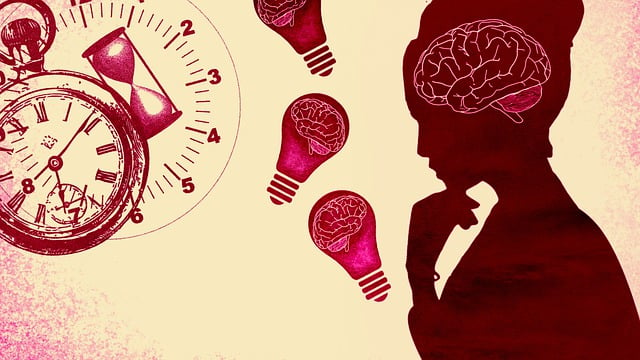Psychologists specializing in child and adolescent therapy empower young individuals aged 0-18 to overcome emotional challenges unique to their developmental stages. Utilizing evidence-based techniques like CBT, mindfulness training, and play therapy, they create safe spaces for clients to develop coping strategies, build resilience, and enhance self-esteem. By fostering emotional intelligence, these professionals enable young minds to navigate peer pressure, academic expectations, and life changes, ultimately promoting long-term emotional well-being and personal growth.
Looking for support for your child’s emotional wellbeing? A psychologist specializing in child and adolescent therapy offers vital tools to navigate challenges. This article delves into the benefits of such therapy, exploring how psychologists foster healthy development. We’ll discuss common struggles faced by young individuals, along with effective strategies employed during sessions. Understanding these approaches can empower parents to seek help and guide their children towards lasting emotional resilience.
- Understanding Child and Adolescent Therapy
- The Role of a Psychologist in Emotional Wellbeing
- Common Challenges Faced by Children and Adolescents
- Strategies and Techniques Used in Therapy Sessions
Understanding Child and Adolescent Therapy
Child and adolescent therapy is a specialized field within psychology that focuses on supporting young individuals, aged 0-18, to navigate and overcome emotional challenges. This form of therapy recognizes that children and adolescents experience unique developmental stages, each presenting distinct psychological needs and concerns. A psychologist trained in this area employs various evidence-based techniques tailored to address issues such as anxiety, depression, trauma, and behavioral problems.
Through a safe and nurturing environment, therapists help young clients explore their emotions, gain coping strategies, build resilience, and enhance self-esteem. Sessions may involve play therapy for younger children, where they express themselves through imaginative play, or cognitive-behavioral therapy (CBT) for adolescents, which teaches them to identify and change negative thought patterns. The ultimate goal is to empower children and adolescents with the skills necessary for emotional wellbeing and personal growth.
The Role of a Psychologist in Emotional Wellbeing
A psychologist plays a pivotal role in fostering and maintaining emotional wellbeing, especially among children and adolescents. They are trained professionals equipped with advanced knowledge in human behavior, psychology, and therapeutic techniques. Their primary objective is to help individuals navigate and manage their emotions effectively, enabling them to lead healthier, happier lives.
Through various therapeutic approaches, psychologists guide young minds in understanding and expressing their feelings, thoughts, and behaviors. They create a safe, non-judgmental space for children and adolescents to explore their emotional challenges, providing tools and strategies to cope with stress, anxiety, depression, and other mental health issues. By fostering emotional intelligence and resilience, these professionals empower their young clients to build lasting relationships, make better decisions, and thrive in diverse environments.
Common Challenges Faced by Children and Adolescents
Children and adolescents often face unique challenges that can impact their emotional well-being. Some common issues include anxiety, depression, trauma, and difficulties with self-regulation. These challenges may stem from various sources such as peer pressure, academic expectations, family dynamics, or significant life changes. A psychologist specializing in child and adolescent therapy is equipped to help them navigate these complex emotions and behaviors.
Through therapeutic interventions tailored to their age and developmental stage, psychologists support young individuals in developing coping strategies, enhancing self-esteem, and building resilience. By creating a safe and non-judgmental space, these professionals encourage open communication, fostering an environment where children and adolescents can explore their feelings, understand their experiences, and learn healthy ways to manage stress and adversity.
Strategies and Techniques Used in Therapy Sessions
Psychologists employing child and adolescent therapy focus on a range of evidence-based strategies and techniques tailored to young minds. These sessions often incorporate cognitive-behavioural therapy (CBT), which helps individuals identify and challenge negative thought patterns, replacing them with more positive and realistic ones. This approach empowers children and adolescents to manage their emotions effectively.
Another common method is mindfulness training, teaching present-moment awareness and emotional regulation skills. Play therapy, art therapy, and solution-focused brief therapy are also utilized, leveraging creative expression and goal-oriented discussions to enhance emotional wellbeing. The psychologist’s role is to provide a safe, non-judgmental space, fostering trust so that young clients can explore their feelings openly and develop coping mechanisms suited to their unique needs.
Child and adolescent therapy, led by qualified psychologists, plays a pivotal role in fostering emotional wellbeing during these formative years. By addressing common challenges, such as anxiety, depression, and behavioral issues, therapists employ diverse strategies to create a safe space for growth and healing. Through evidence-based techniques tailored to each individual’s needs, psychologists enable children and adolescents to develop resilience, improve coping mechanisms, and enhance their overall emotional health. Seeking professional support from a psychologist is a proactive step towards ensuring a brighter and more balanced future for young minds.



